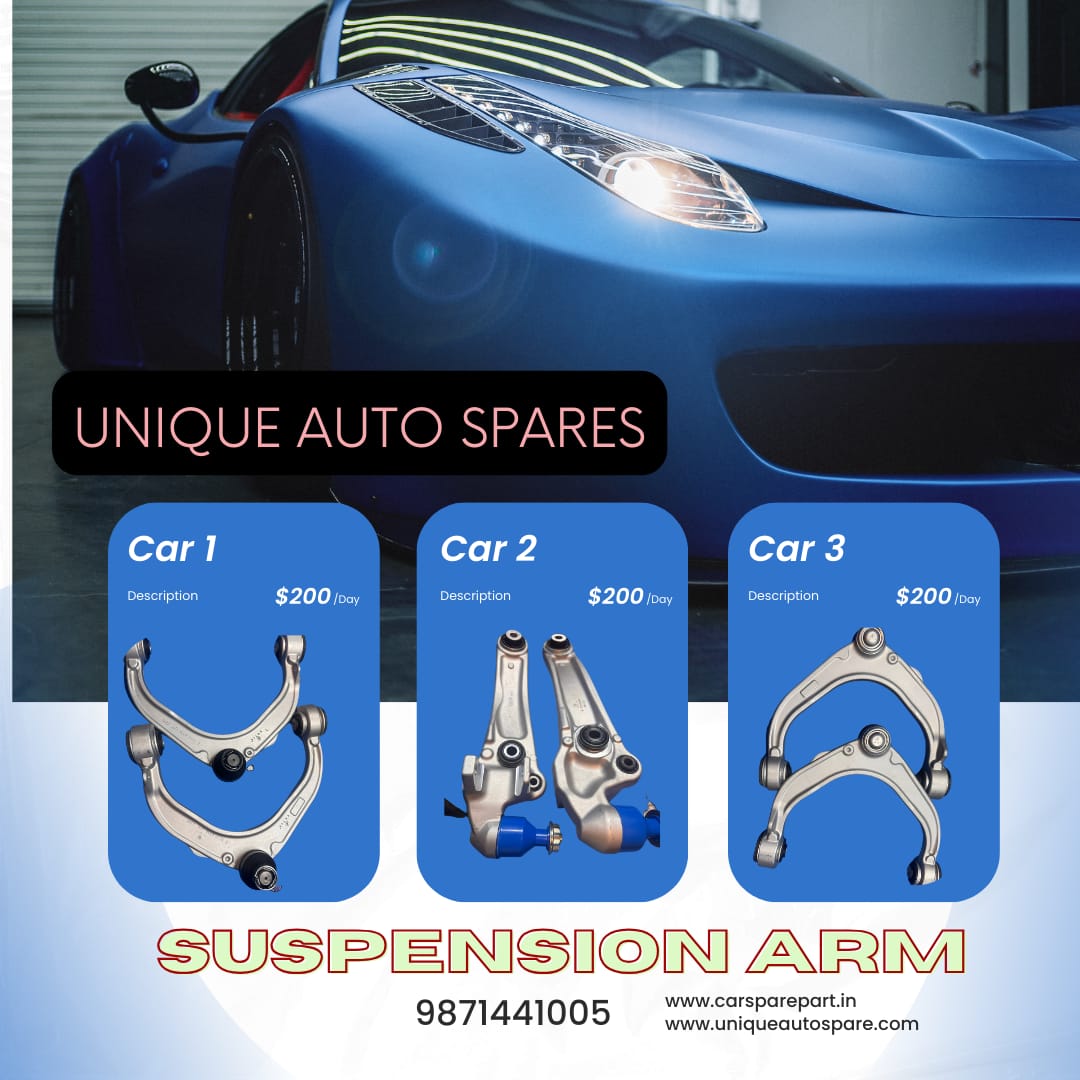
unique auto spares.The suspension arm (often re...

unique auto spares.The suspension arm (often referred to as control arm) in a Mercedes-Benz vehicle is a crucial component of the suspension system. It connects the vehicle's chassis to the wheel assembly, allowing for controlled wheel movement and ensuring proper alignment and handling. Functions of Suspension Arms: Wheel Alignment: Suspension arms help keep the wheels aligned with the vehicle’s chassis, ensuring proper handling and tire wear. Ride Comfort: They absorb and manage shocks and vibrations from the road, contributing to a smooth ride. Handling Stability: Suspension arms play a role in maintaining vehicle stability, especially during cornering and braking. Types of Suspension Arms: Upper Control Arms: These are located above the wheel and connect the top of the wheel hub to the vehicle’s frame. Lower Control Arms: Positioned below the wheel, these connect the bottom of the wheel hub to the vehicle’s frame. Multi-Link Suspension Arms: Used in more complex suspension systems, these include multiple arms to provide enhanced control and comfort. Common Issues with Suspension Arms: Worn Bushings: The rubber or polyurethane bushings in the suspension arms can wear out, leading to noise, vibration, or poor handling. Ball Joint Failure: The ball joints that connect the control arms to the wheel assembly can wear out, causing clunking noises and affecting steering. Bent or Damaged Arms: Impact from road hazards or accidents can bend or damage the suspension arms, affecting alignment and handling. Replacement Procedure: Safety First: Ensure the vehicle is on a level surface, and lift it using a jack and jack stands. Disconnect the battery if needed. Remove the Wheel: Take off the wheel to access the suspension components. Support the Suspension: Use a jack or support to hold the suspension in place while you work on removing the control arm. Remove the Old Suspension Arm: Unbolt the control arm from the chassis and the wheel hub assembly. If the arm has bushings or ball joints, you may need special tools to separate them. Install the New Suspension Arm: Position the new control arm and bolt it into place. Ensure that all bolts are tightened to the manufacturer’s specifications. Reassemble: Reinstall the wheel and lower the vehicle. Alignment Check: It’s crucial to have a professional wheel alignment done after replacing suspension arms to ensure proper handling and tire wear. Test Drive: Test the vehicle to ensure that any issues with noise or handling are resolved. Parts and Accessories: OEM Suspension Arms: Original Equipment Manufacturer (OEM) parts are recommended for the best fit and performance. These can be sourced from Mercedes-Benz dealerships or authorized parts suppliers. Aftermarket Suspension Arms: High-quality aftermarket options are available, but ensure they are compatible with your specific Mercedes-Benz model and are from reputable brands. Where to Find Parts: Mercedes-Benz Dealerships: They provide genuine OEM parts and can offer guidance based on your vehicle’s VIN. Online Auto Parts Retailers: Websites like AutohausAZ, Pelican Parts, or ECS Tuning offer a variety of suspension components for Mercedes-Benz vehicles. Specialized Parts Suppliers: Companies like ZF (a supplier for many European cars) or Bilstein may offer high-quality aftermarket options. Tips for Purchasing: Verify Compatibility: Ensure that the suspension arm you purchase is designed for your specific Mercedes-Benz model and year. Check Reviews: For aftermarket parts, reviews can provide insight into quality and reliability. Consult a Mechanic: If you’re unsure about installation or part compatibility, consult a professional mechanic or Mercedes-Benz specialist. If you provide your Mercedes-Benz model and year, I can assist with specific part numbers or offer more detailed recommendations. Car Suspansion Parts Supplier,
Keywords
Subscribe for latest offers & updates
We hate spam too.


